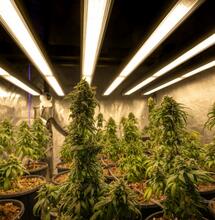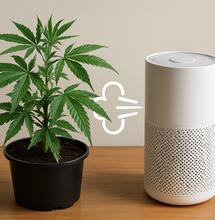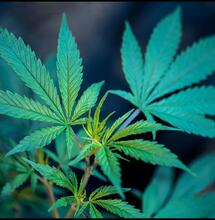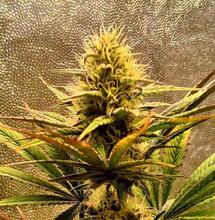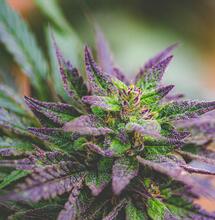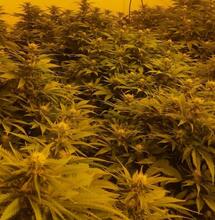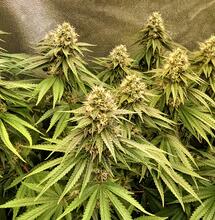A Cannabis Plant’s Transition Stage and What to Know When Flowering

If you have grown indoor cannabis plants before, you will have noticed that once you changed your timers over, your plants will stretch upwards. This is known as the transition stage when plants react to the long darkness periods and prepare to flower, and produce their beautiful, frosty and aromatic buds.
In this article, I break down all you need to know about a cannabis plant’s indoor stage, what to know as well as common mistakes to avoid, to allow you to grow the best indoor crops.
What Is the Transition Stage?
Once you set your timers to 12/12, your cannabis plants will respond by going through a hormonal change and producing auxins and growth hormones. It is during this time, when you will notice the size and width of your indoor plants will increase by 2 or 3 times and stretch as tall as possible to receive as much intense lighting as possible.
How Many Weeks Does the Transition Stage Last?
The transition stage will last for 2–3 weeks before they stop stretching, and the canopy has filled out and becomes bushy. Many growers will count this as part of the number of weeks that a specific strain may have, however, the first few weeks from 12/12 are the transition stage. It is only after week 2 onwards when your cannabis plants will exhibit the first signs of pistils and pre-flowers, which are the bright white fuzzy hairs that grow between the internodes.
Prepare for the Plants to Stretch
Once you have an awareness that your indoor cannabis plants will stretch and reach for the grow lights, you will have a much better opportunity to prepare. Indica and indica dominant hybrids will typically double in size, whilst sativa dominant and pure sativas can dramatically increase in size and even become 3 times taller than when in the vegetative stage.
This means that as an indoor grower, it is important to account for the increase in height, so it is a good idea to make sure you raise your grow lights upwards, and have the extraction, ducting and carbon filter out of the way, so your plants can stretch without growing too close and the inside of your tent or grow space become overcrowded affecting ventilation and light distribution.
What Plant Training Methods Can Be Performed During the Transition Stage?
I have found over the years that all plant training techniques should be performed a week before you change your timers to 12 hours of light and 12 hours of darkness. However, tying down the tallest point in the canopy is a safe, stress-free and practical way to significantly reduce the final height of the canopy. Tying down will also eliminate the concern of the buds growing too close to the light, resulting in stress and potential bleaching of the buds and burning the leaves and foliage.
Can I Take Clones During the Transition Stage?
It is best to take clones during the transition phase within the first 7 days once your plants are stretching.. The reason being that some strains can flower faster than others, and by the second week, may stay flowering, meaning that the clones will then need to be re-vegged under 18 hours of light and go through the entire process of vegetation again, which can take 4–5 weeks in some cases.
The first 7 days are also an excellent opportunity to prune your plants and perform a lollipopping technique, so the plants can focus their energy on the top growth, which also improves air flow and ventilation around the pots and middle of the plants.
Can I Foliar Spray Cannabis Plants When They Are Transitioning?
I am a big fan of foliar spraying my plants and as long as the humidity levels and ventilation are on point, then there is nothing to be concerned about. It is only when your buds have developed from week 4 onwards that spraying may be problematic. When foliar spraying cannabis plants, always spray the tops and undersides of the leaves, and be careful not to spray too close to the bulbs of H.P.S or metal halide lights.
The Correct Temperature and Humidity Levels
During the vegetation stage, your plants will have gotten used to a higher humidity level of around 60-70% with ambient and consistent lights at a temperature of 24 degrees Celsius. Once your plants enter the transition stage, you will want to lower the relative humidity levels to around 50% and remain at 24 degrees Celsius, and to drop that down to 40-45% once you are in week 4 onwards of bud development.
The easiest way to know the exact environmental conditions of your indoor grow room is to use a digital hygrometer and to keep it inside the tent. This way you will know the temperature and humidity of the tent with the lights on or off.
What Nutrients Do Cannabis Plants Need During the Transition Stage?
I always use the same nutrients that I was using during the vegetative stage, and it is only once I enter week 3 of the flowering period, that I will intend to use the flowering nutrients. It is important to know that during the transition stage, your plants will still be dependent on nitrogen to produce new growth, shoots and stems, so be careful not to provide too much phosphorus and potassium, and make sure they receive plenty of calcium, magnesium and trace elements, to help them through.
Mistakes to Avoid During the Transition Stage
As a beginner grower, several common mistakes can easily be made, which can affect how your plants perform over the transition stage before entering the flowering stage.. Below are 5 mistakes to avoid and have an awareness of when growing indoor cannabis.
1. Topping Your Cannabis Plants
Topping cannabis plants is a great way to produce multiple crown shoots and increase the number of flowering sites. Topping is a high stress technique that requires 7–10 days of recovery time, so avoid topping your plants once the timers have been changed, to prevent high levels of stress, and potentially slow growth down. If you do want to perform the topping technique, then always do this during 18/6 and ideally a week before flowering is induced.
2. Feeding High Amounts of Phosphorus and Potassium
It is only natural to want to push your cannabis plants as much as possible once they flower and give them the best potential start of growing big buds and large sized yields. Cannabis plants will produce an abundance of new leaves over the 2-week transition stage, so avoid giving them flowering boosters or high amounts of phosphorus and potassium, and wait until the start of week 3, before doing so, from my experience.
3. Keeping Your Grow Lights Too Low
There are many advantages to keeping your grow lights low and as close to the canopy as possible, to enable them to receive as much intense lighting and photosynthetic radiation (P.A.R) as possible. When it comes to adapting to aggressively fast growth and plants doubling or in some cases trebling in height, it is best to raise the lights, providing a 60-80 cm clearance space above the canopy.
4. Allowing the Plants to Become Overcrowded
Not only will your plants want to stretch upwards as tall as possible with the intention of growing as close to the light source as possible, the width and growth structure will also become much wider and begin to fill out the space. If you have numerous plants in the same grow space, make sure there is enough space between them to avoid overcrowding. Doing so will help keep the air flow around the plants optimal and prevent the risk of moldy buds and powdery mildew due to poor ventilation and high humidity levels.
5. Causing Too Much Stress
Once your plants have stretched and begin to flower, they should be as stress-free as possible and allowed to develop and focus on producing big chunky buds. Performing high stress techniques such as topping, stem snapping, heavy defoliation, and becoming too hot from grow lights is the way to cause the most stress.
You may even run the risk of inducing hermaphroditic plants developing, which in a worst case scenario will produce a seeded crop or pollinate the surrounding female plants. A hermie Cannabis plants will begin to show signs of male and female flowers should be removed from the grow room as explained by M.S.N.L.
Also read on Soft Secrets:
